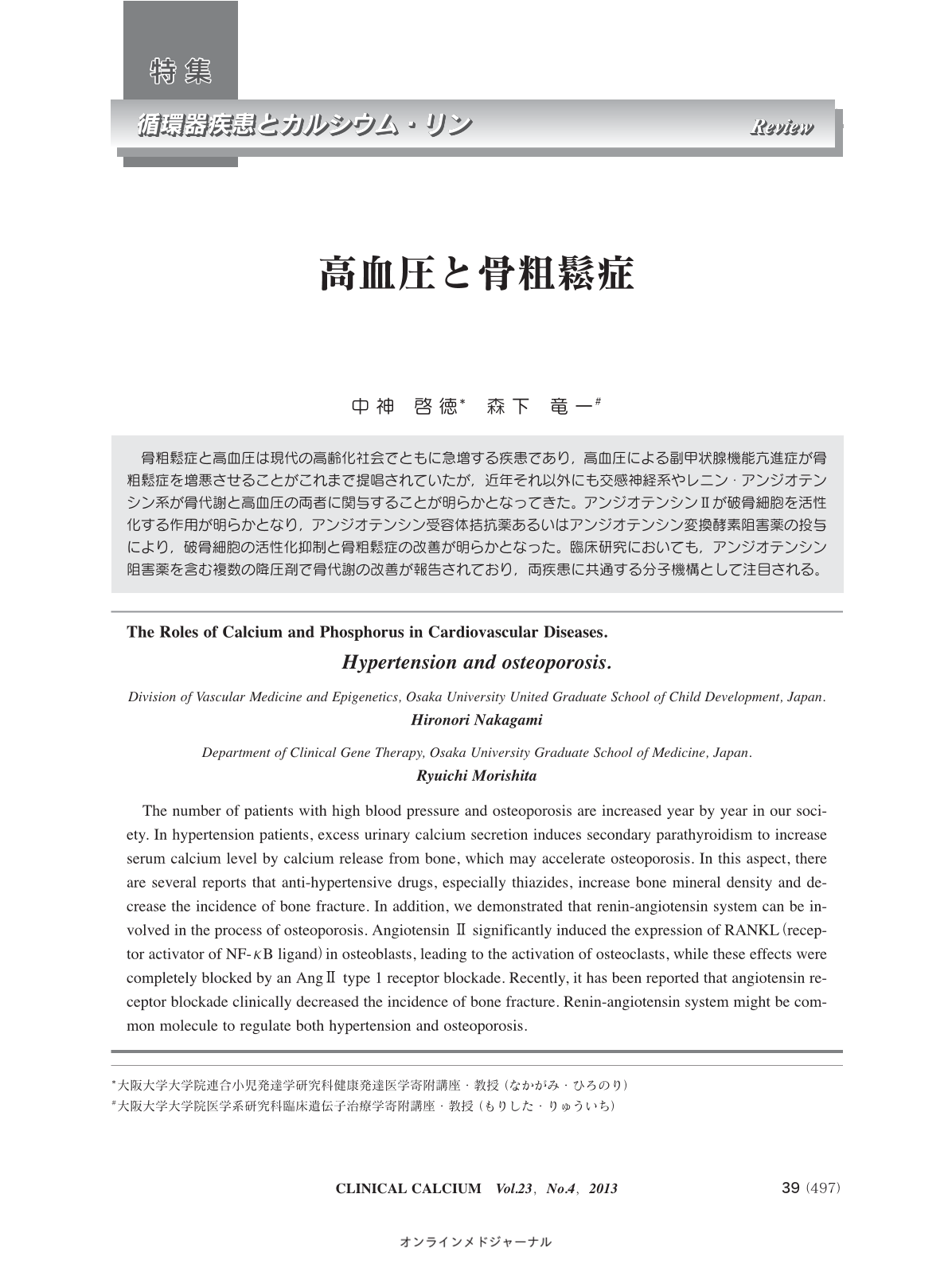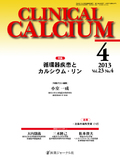Japanese
English
- 有料閲覧
- Abstract 文献概要
- 1ページ目 Look Inside
- 参考文献 Reference
骨粗鬆症と高血圧は現代の高齢化社会でともに急増する疾患であり,高血圧による副甲状腺機能亢進症が骨粗鬆症を増悪させることがこれまで提唱されていたが,近年それ以外にも交感神経系やレニン・アンジオテンシン系が骨代謝と高血圧の両者に関与することが明らかとなってきた。アンジオテンシン II が破骨細胞を活性化する作用が明らかとなり,アンジオテンシン受容体拮抗薬あるいはアンジオテンシン変換酵素阻害薬の投与により,破骨細胞の活性化抑制と骨粗鬆症の改善が明らかとなった。臨床研究においても,アンジオテンシン阻害薬を含む複数の降圧剤で骨代謝の改善が報告されており,両疾患に共通する分子機構として注目される。
The number of patients with high blood pressure and osteoporosis are increased year by year in our society. In hypertension patients, excess urinary calcium secretion induces secondary parathyroidism to increase serum calcium level by calcium release from bone, which may accelerate osteoporosis. In this aspect, there are several reports that anti-hypertensive drugs, especially thiazides, increase bone mineral density and decrease the incidence of bone fracture. In addition, we demonstrated that renin-angiotensin system can be involved in the process of osteoporosis. Angiotensin II significantly induced the expression of RANKL(receptor activator of NF-κB ligand)in osteoblasts, leading to the activation of osteoclasts, while these effects were completely blocked by an Ang II type 1 receptor blockade. Recently, it has been reported that angiotensin receptor blockade clinically decreased the incidence of bone fracture. Renin-angiotensin system might be common molecule to regulate both hypertension and osteoporosis.



